Our ancestors have long used gold and jewels to decorate ancient temples as well as wear them! No wonder as a culture, beautiful Black people love shiny things.
The relationship between bling and Black expression is not generally understood as something deeper than just a case of conspicuous consumption. The role of gold and jewels doesn’t vary too much from the past. Today, gold, medallions, chains, and other jewelry are used to represent significance and personal worth.
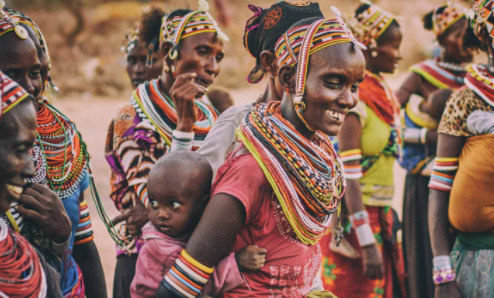
The 1980’s didn’t just bring us cool Sci-Fi movies and Michael Jackson, but it was also the introduction of bling, and we have Hip Hop to thank for that! Bling is actually an official word in the English language entered into the Oxford Dictionary defined as “expensive, shiny jewelry and bright, fashionable clothes worn in order to attract attention to yourself.” Although, some may argue that rappers wore bling to show off how much money they had, others will also argue that maybe it was an attempt to reconnect with the glory of Ancient Africa.
Rap and Hip-Hop have successfully enriched our culture and the industry with shiny and heavy bling. Bling came from the term used by Dana Dane in the rap song “Nightmare” in 1987. At the time, “bling” was simply an idiophone mimicking the sound of a bell, which could also mimic the sound of light hitting gems, jewelry and money on-screen. Bling became known over the years as a very valuable metallic piece of jewelry, and the heavier and shinier it was, the better. By 1999, “bling-bling” was a song featured in Cash Money Millionaires rapper B.G. piece.
“Pinky ring worth about 50 bling bling / Everytime I buy a new ride bling bling / Lorenzos on Yokahama tires bling bling…” quoted lyric from song.
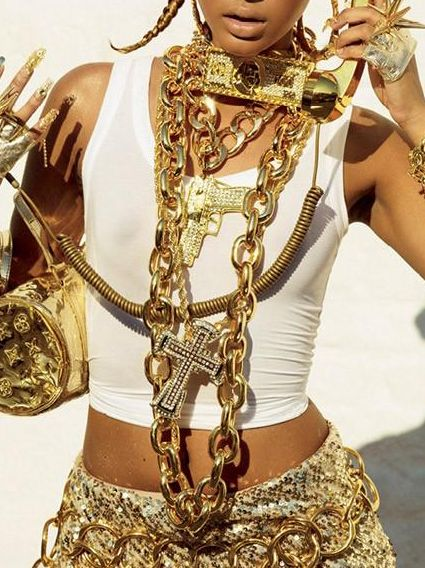
The birthplace of this flashiness has been a gift and a curse. Africa’s plethora of gold, diamonds and other minerals quickly shaped the history of the rest of it’s years as explorers came and exploited the continent. The West African region got the name “Gold Coast” for obvious reasons.
Certain areas of West Africa have been known historically for gold mining. Two huge and famous empires were in Ghana and Mali.
Although resources were plentiful, gold wasn’t available enough to be worn by all members of society. The big difference between the African American infatuation with bling and African culture is that in the traditional African context, it was only worn by the powerfully elite.
Nowadays, we can make fake gold and wear it as fashion, removing the traditional class hierarchy that was common with our African brothers and sisters.
Even though there are some Black Americans that do wear jewelry for the flashiness of it, I have always felt it was deeper than that. Maybe even deeper than our African roots. I have even wondered if centuries of mistreatment with money and banking systems in the U.S. led us to wear our wealth in our cars, clothes and jewelry. However, why are we bashed for this? Why can’t we wear our wealth? I mean after all, Mansa Musa, the King of Mali in West Africa, is considered the wealthiest human being of all time. He not only bathed in his wealth, but he shared it!
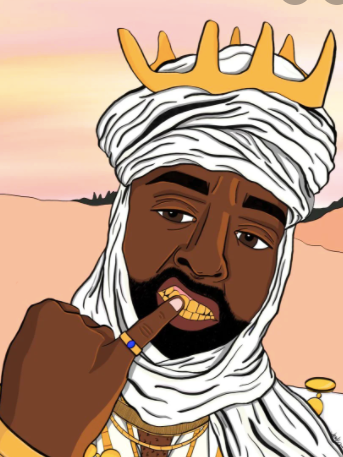
He literally went on a 4,000 mile trip carrying an entourage and hundreds of pounds of gold. From the markets of Cairo to royal offices to the impoverished people that crossed his path in Egypt, Musa was extremely generous and he even purchased foreign goods, filling the streets with gold! Does any of this sound a bit familiar? A couple of years ago, rapper Drake gave away the entire $1 million budget for his new music video, “God’s Plan,” on groceries, cars, scholarships, even random wads of cash to strangers. We have also seen this with Chance the Rapper and female rapper Nikki Minaj.
The homes and palaces of ancient Africans were often decorated with gigantic monuments and the temples and palaces found in Ancient Egypt, Sudan, Benin and the Ghana Empire, had walls made of gold and painted glitter signifying that their kingdoms were wealthy. Even every day homes showed off their wealth with gold-plated utensils.
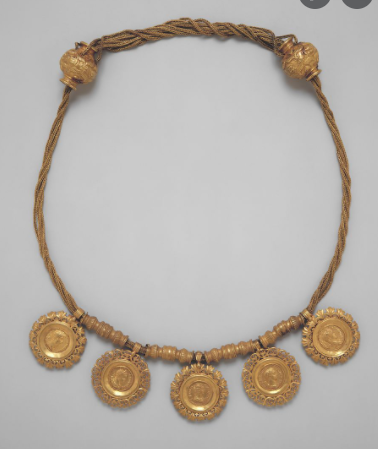
In Ancient Zimbabwe, they wrapped their dead in gold foils and buried them with expensive head pieces; a practice still honored today in some East and West African countries. It was believed that the dead needed to be ushered into the afterlife implying that they lived a good first life. The ceremony became a competition between families.
Honestly, in my personal opinion, Black Americans are also flexing on an industry that took so much away from us, when most of America was built on the backs of Black labor and resources. How many stories are out there, in Africa and America, where some diamond was found and Europeans came in and started mining right there, destroying and taking whatever they felt was theirs?
For example, Johannes De Beers, whose company created the marketing phrase “diamonds are forever,” basically controls all diamonds on Earth today! The story goes, 15 year old Eramsmus Stephanus Jacobs, was walking around his own farm in 1866 on the Orange River in Northern Cape, South Africa when he discovered a transparent rock. It was said that the kid played with it for a while, then gave it to his mother who “may” have given it as a gift to a neighbor, Shalk van Niekerk, a farmer who collected gems as a hobby. After examining the stone he expected some value and offered to buy it from them but she didn’t take any money and let him have it. At the time, diamonds were only mined in India and Brazil, so this would have been a very rare find. As you can guess, the stone traveled from hand to hand before it was determined to be 21.25 carats! Sir Philip Wodehouse, then Governor of the Cape, bought it for 500 UK pounds.
“This diamond is the rock upon which the future success of South Africa will be built”. This later became known as the Eureka Diamond (21.19 carats) and we all know what unfortunate events happened after that.
Black workers mined day and night to deliver and craft gold and diamonds for the people that oppressed them, not to mention the horrible years of illegal diamond mining that went on. Despite all of that, Africans and African Americans have dominated this industry; period.
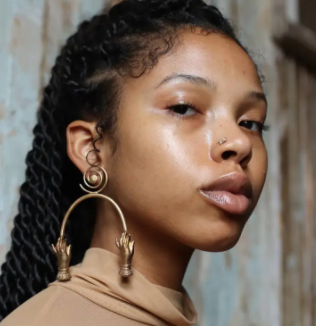
More and more Black jewelry designers are making waves across the jewelry business and entertainment world. Our jewelry isn’t just pieces of fashion for flashiness, most of it makes a necessary statement and is assumed a piece of art to designers. Just as it wasn’t flashiness to our African Ancestors; it means something to each individual. Before you walk out of your home, you put on that pearl necklace passed down to you by your great great grandmother, or that black tourmaline bracelet that not only protects you and brings positivity, but looks great with your black button up!
Nowadays, Black jewelry designers are designing with purpose and people are wearing it with just that. Large-scale initiatives such as the Art Smith Memorial Scholarship Fund amplify Black voices in the jewelry industry, but so do local Black-owned brands.
Jade Gedeon’s environmentally conscious brand We Dream in Colour is a mix of the different countries and cultures she grew up in. Hammered metals, nature motifs, and celestial figures are some common themes she uses.
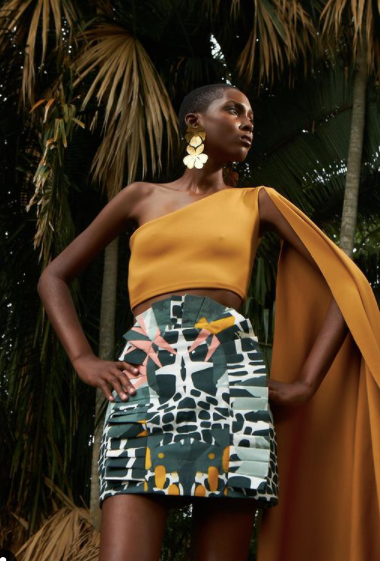
The history of bling tells the story of perseverance and vision and we have to ignore the unfortunate cultural appropriation that comes along with making it okay for white people to do and wear things and a problem when Black people do the same. Nothing is wrong with wanting to stunt your jewelry, as a matter of fact we make it look good! Critics will always be quick to write off these displays of wealth as unsophisticated, but we know better and we simply don’t care.
Black jewelry designers are popping up with new creations every day, inspiring our people to continue to express ourselves as we please. Whether we want to over exaggerate our bling or simply make a personal statement with our clothing, it is bred in us to look and feel good, we simply cannot help it.


